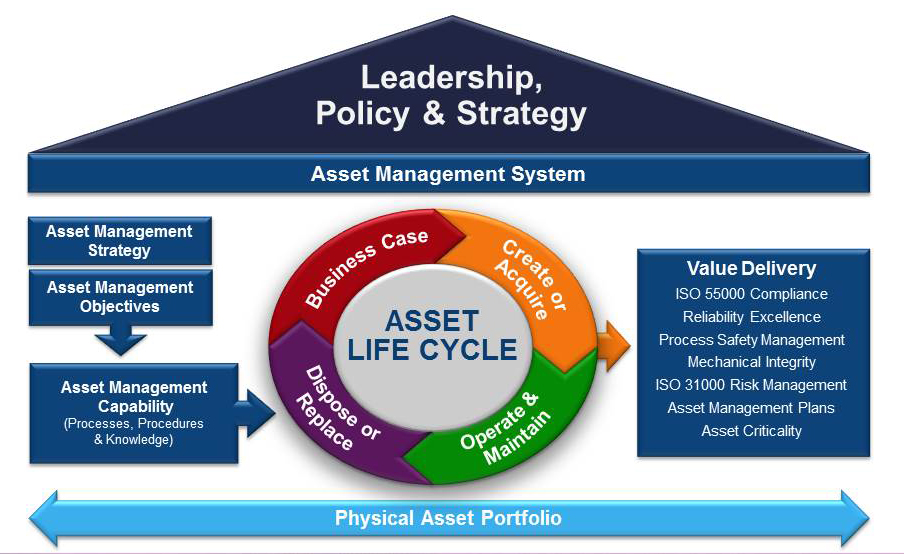Asset Management Plans: An ISO 55000 Building Block
By Rick Wheeler, Life Cycle Engineering
With the increased adoption of the ISO 55000 Standard for Asset Management, released in early 2014, more and more companies are contacting us and asking for help in understanding the standard and developing an ISO-compliant asset management system. Based on the questions we hear from our clients, I want to explain what an asset management system consists of and why it’s important, and dispel one of the big myths that’s out there in the market.

What does an asset management system do?
An asset management system defines how the assets will be managed, across their life cycle, to meet what ISO calls stakeholder requirements. As explained in the ISO 55000 standard, these activities are documented in the asset management policy, strategy, objectives and asset management plans.
Based on Life Cycle Engineering’s 40+ years of developing asset management systems, we understand that the power of an asset management system comes from the effectiveness of what we call the asset management capabilities. These are the processes, procedures and knowledge that, when applied effectively across all stages of the asset life cycle, will provide the optimal return on the investment.
Why are asset management plans important?
Asset management plans are where the rubber really hits the road. They provide the roadmap for achieving value from physical assets by optimizing cost, risk and performance across the asset life cycle. Asset management plans (AMPs) define what you need to do to accomplish asset management objectives, which translate your organization’s strategic intent.
The most important part of asset management plans, as defined by ISO 55000, is the Asset Lifecycle Management Section, which summarizes how assets will be managed and operated, at an agreed-upon service level, while optimizing total cost of ownership, at an appropriate level of risk. The subsections of the plan illustrate how comprehensive AMPs should be. An AMP should include:
- AMP Overview
- Link to corporate objectives
- Stakeholders and their requirements
- Relationship with other plans
- Levels of Service Required (Present and Future)
- Current Condition (Asset Health)
- Asset Lifecycle Management
- Risk Management Plan
- Operating Plan
- Maintenance Plan
- Capital and Recapitalization Plan
- Financial Summary
- Continuous Improvement
Is the asset management system myth true or false?
Now let’s consider the big myth that’s out in the market. I have heard a number of people say things like “I’m looking for an asset management system – which software product do you recommend?” Or, “I know where my gaps are – I’ll fix them when I implement the new software I’m moving to.” These folks believe a myth that adopting (or re-implementing) a new CMMS or EAM system will create an asset management system. It’s just not true. While software can – and must – support your asset management system, it doesn’t create the system for you. For example, when we work with our clients we help them implement more than 90 business processes that are not software-driven functions. Learn about our ISO 55000 Training for Leaders, a one-day virtual workshop.
Don’t believe the myth. Developing a strong asset management system will strengthen your organization’s operations by driving the most value from your assets in a safe and cost-effective way. It’s worth investing the time, energy and resources to do it the right way.
Rick Wheeler is the Executive Director of Life Cycle Engineering’s Reliability Consulting Group. He has led many process improvement initiatives resulting in substantial cost savings in the pharmaceutical, chemical, and nuclear industries.You can reach Rick at rwheeler@LCE.com.

